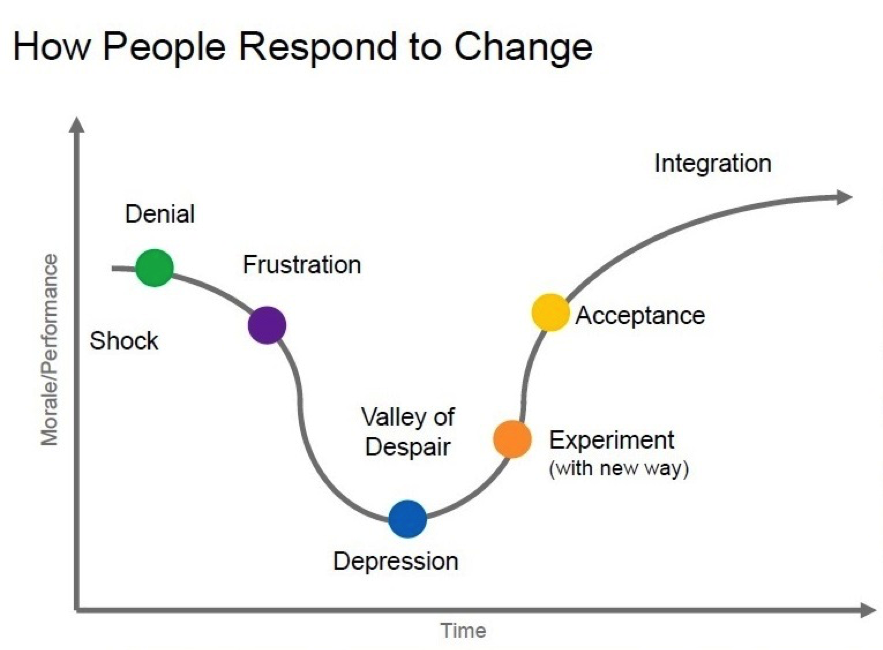There is a lot of innovation driving the business world today and organizations face a perpetual tension between managing change and maintaining stability. As industries evolve due to technological advancements, market fluctuations, and shifting consumer expectations, companies must navigate these waters carefully. This article explores the nuances of managing change versus maintaining stability, providing insights for leaders aiming to foster a resilient and adaptive organizational culture.
Why Change Management?
We all know what happens to companies that don’t adapt and change with the times. Change management is often needed to ensure continued survival or business relevance. It is a critical aspect of any organization seeking to adapt and thrive in a constantly evolving environment. Successful change management bridges the gap between where an organization is today and where it wants to be tomorrow.
It involves not just the strategies employed, but also the culture within that organization, making it essential for leaders to manage both the change and the stability needed for productivity.

The Need for Change
Change is an inevitable part of any organization’s lifecycle. Whether prompted by internal factors, such as restructuring or employee turnover, or external pressures like economic downturns or regulatory shifts, change can be both a challenge and an opportunity. Organizations that embrace change can innovate, improve efficiency, and enhance customer satisfaction.
- Driving Innovation: Change can stimulate innovation, encouraging teams to think creatively and develop new solutions. Organizations like Google and Apple thrive on their ability to adapt to changing market conditions and consumer preferences.
- Enhancing Competitiveness: In a competitive landscape, the ability to pivot quickly can mean the difference between success and failure. Companies that manage change effectively position themselves to seize new opportunities and maintain a competitive edge.
- Responding to External Pressures: Market dynamics, regulatory changes, and technological advancements require organizations to be agile. Firms that fail to adapt may find themselves outpaced by more responsive competitors.
Also Read: The advantage of adaptive leadership in the modern business world
What About Stability?
Organizations often focus heavily on change initiatives, neglecting the importance of creating an environment where employees feel secure and skilled to embrace that change. Change should not be confused with disruption. We are human after all, and we tend to stick with the routines and social support networks that we are used to. Therein lies the importance of cultivating stability.
According to Ashley Goodall, a leadership expert, people perform their best at work when:
- The environment is predictable
- They have a degree of control over their surroundings
- They are supported by stable relationships
- They feel a sense of connection to routines and place
- They clearly understand the purpose of their efforts.
From this perspective, constant change hinders performance rather than driving it.
Improving Stability in Business
The Importance of Stability
While change is crucial, maintaining stability is equally important. Stability provides the foundation upon which organizations can build and grow. A stable environment fosters trust, reduces anxiety, and allows employees to focus on their core responsibilities.
- Building Trust and Loyalty: Stability creates a sense of security among employees. When staff members feel secure in their roles and the organization’s direction, they are more likely to be engaged and loyal. Being supported by those around you aids in a sense of belonging. And understanding the connection between our daily efforts and the direction and impact of the organization overall gives meaning to our work. Companies like Johnson & Johnson have maintained a strong reputation by prioritizing stability in their corporate culture.
- Enabling Long-Term Planning: A stable environment allows for strategic long-term planning. Organizations can allocate resources effectively, set realistic goals, and measure progress without the constant disruption of change.
- Facilitating Organizational Culture: Stability helps cultivate a strong organizational culture. When employees and their teams know what to expect, they can collaborate more effectively, fostering teamwork and innovation within a consistent framework. Understanding expectations or being able to work effectively aid in creating a sense of predictability and agency.
Striking the Right Balance
Finding the right balance between change management and stability management is crucial for organizational success. Leaders must cultivate a culture that encourages adaptability while ensuring that employees feel secure in their roles.
- Adopting a Change Management Framework: Implementing a structured change management framework can help organizations navigate transitions effectively. This includes assessing the need for change, planning for implementation, and providing support to employees throughout the process. Models like Kotter’s 8-Step Process for Leading Change offer valuable guidance for organizations seeking to manage change without sacrificing stability.
- Engaging Employees: Employee engagement is key to successfully managing change. Involving employees in the change process can reduce resistance and foster a sense of ownership. Regular communication, feedback loops, and opportunities for collaboration can help employees feel more connected and invested in the organization’s direction.
- Fostering a Culture of Continuous Improvement: Organizations that embrace a culture of continuous improvement are better equipped to balance change and stability. This involves encouraging employees to seek innovative solutions, experiment, and learn from failures while reinforcing the core values that underpin the organization’s mission.
- Monitoring and Evaluating Outcomes: Continuous monitoring and evaluation of change initiatives are vital. By analyzing the impact of changes on productivity, employee satisfaction, and overall performance, organizations can make data-driven decisions about future changes, ensuring they are beneficial and aligned with the organization’s strategic goals.
Challenges in Balancing Change and Stability
Organizations face several challenges when trying to balance change and stability:
- Resistance to Change: Employees may resist change due to fear of the unknown or concerns about job security. Addressing these concerns through transparent communication and support is essential.
- Short-Term vs. Long-Term Goals: Leaders often struggle to prioritize immediate needs against long-term objectives. Balancing these competing priorities requires careful consideration and strategic planning.
- Cultural Misalignment: An organization’s culture may not align with the changes being implemented, leading to friction. Ensuring that change initiatives resonate with the organization’s core values is crucial for successful implementation.
- Resource Constraints: Change initiatives often require significant resources, including time, personnel, and financial investment. Organizations must allocate resources effectively to support both stability and change.
Case Studies: Success and Failure
Examining real-world examples can illustrate the importance of managing change and maintaining stability effectively:
- Successful Change Management: IBM is a notable example of successfully managing change. The company has undergone significant transformations over the years, shifting from hardware to software and services. Through strategic planning, employee engagement, and a focus on innovation, IBM has managed to navigate these changes while maintaining a stable organizational culture.
- Failure to Adapt: Blockbuster serves as a cautionary tale of failing to adapt to change. Despite being a leader in the video rental industry, Blockbuster’s inability to embrace digital streaming and evolving consumer preferences led to its decline. This example highlights the dangers of rigidity and the necessity of balancing change and stability.
Conclusion
The tension between change management and maintaining stability is a fundamental challenge for organizations. Leaders must navigate this landscape carefully, implementing structured change management practices while fostering a culture of stability and trust. Stability is all about the people in an organization, preserving intact teams, supporting team leaders in building thriving teams, and considering teams to be the most important organizational unit. By striking the right balance, organizations can position themselves for long-term success, embracing change as a driver of innovation while maintaining a stable environment that nurtures employee engagement and loyalty. Ultimately, the ability to adapt while remaining anchored in core values will define the future success of organizations in an ever-evolving business landscape.


